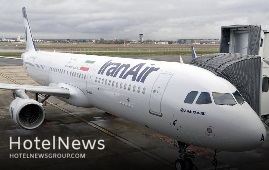
The average of international travels to and from Iran fell by 80 percent during the past Iranian calendar year 1399 (ended on March 20, 2021) from a year earlier. “During this period, 4,343,163 passengers entered the country, which included 3,030,464 Iranian passengers and 512,699 international travelers,” Mehr quoted Arezou Ghaniun, an official with the Islamic Republic of Iran's Customs Administration, as saying on Saturday. “From the beginning of 1399 to the end of it, we saw a significant reduction in passenger traffic to the country or vice versa in land, sea, rail and air borders, which were caused by various coronavirus restrictions.” International tourist arrivals to Iran plunged 72% during the first eight months of the year when compared to 2019, according to data compiled by the World Tourism Organization. Restrictions on travel introduced in response to the COVID-19 pandemic continue to hit global tourism hard, with the latest data from the UNWTO showing a 70% fall in international arrivals for the first eight months of 2020. Iran, however, has experienced different rates of downfall for inbound passengers over the past months. In the first three months of 2020 (January, February, March), the tourism industry of the country recorded negative rates of 90, 92, and 94 percent, respectively, compared to the same period last year, according to the organization. The fall reached 96 and 97 percent in April and May. And in June, a negative 84% was recorded. But the interesting point in the statistics published by the World Tourism Organization is a steep slope of the improvement of Iran’s tourism arrivals during the last two months, as such growth has leaped 35% in July and August. Optimistic forecasts, expect the country would achieve a tourism boom after coronavirus contained, believing its impact would be temporary and short-lived for a country that ranked the third fastest-growing tourism destination in 2019. According to the newest UNWTO Barometer, international arrivals plunged 81% in July and 79% in August, traditionally the two busiest months of the year and the peak of the Northern Hemisphere summer season. The drop until August represents 700 million fewer arrivals compared to the same period in 2019 and translates into a loss of US$ 730 billion in export revenues from international tourism. This is more than eight times the loss experienced on the back of the 2009 global economic and financial crisis. “This unprecedented decline is having dramatic social and economic consequences, and puts millions of jobs and businesses at risk,” warned UNWTO Secretary-General Zurab Pololikashvili. “This underlines the urgent need to safely restart tourism, in a timely and coordinated manner”. UNWTO’s Panel of Experts foresees a rebound in international tourism in the current year, mostly in the third quarter. However, some experts suggest the rebound could occur only in 2022. Travel restrictions are seen as the main barrier standing in the way of the recovery of international tourism, along with slow virus containment and low consumer confidence. The lack of coordinated response among countries to ensure harmonized protocols and coordinated restrictions, as well as the deteriorating economic environment, were also identified by experts as important obstacles for recovery. The Islamic Republic expects to reap a bonanza from its numerous tourist spots such as bazaars, museums, mosques, bridges, bathhouses, madrasas, mausoleums, churches, towers, and mansions, of which 24 being inscribed on the UNESCO World Heritage list. Under the 2025 Tourism Vision Plan, Iran aims to increase the number of tourist arrivals from 4.8 million in 2014 to 20 million in 2025.
Create: May 16, 2021 Edit: May 16, 2021 Regional News
At a time when many of the world’s events continue to be plagued by COVID-19, making plans even a week in advance may seem difficult, much less 10 years into the future. Nearly overnight, the dialogue shifted from “where to for lunch?” to “can you hear me?”. And as hotels emptied out and travel restrictions drag on, many may wonder, where lies the future of hotels? To answer this question, it is first important to recognize that the hotel sector does not exist as an individual silo, but one which forms part of a much wider network: the ecosystem of how we live and work. The cities in which we live today are a reflection of how humans have shaped our environments to fit our social and economic needs. For generations, urban agglomeration had been the standard of cities, and central business districts (CBDs) thrived as we commuted between living in one area and working in another. Accordingly, hotels have typically focused on serving transient international or regional visitors, primarily playing one of two roles: a place to sleep and meet during our business travels, or a place of respite for our leisure getaways. Today, rising interest in (semi-) permanent remote working and a greater desire to live outside of high-density urban areas may signal yet another impending change in the way we live and work. Could deurbanization or decentralization continue on this trajectory – and what would that mean for hotels? In a Cushman & Wakefield webinar, Richard Pickering, Chief Strategy Officer, EMEA and Borivoj Vokrinek, Strategic Advisory and Head of Hospitality Research EMEA from Cushman & Wakefield, traced the paths of how our societies and hotels have evolved, from their very beginnings to where they could be in the future. Blast from the past: The evolution of travel, from immobile to transient lifestyles Since the early days of civilization, the structure of our society has dictated where we lay our heads every night. When humans lived in self-sufficient tribes and settlements, there was no need to travel or sleep anywhere other than in our own beds; while as society progressed, business travel dominated as merchants travelled for trade. And then, with higher disposable incomes, more free time, rising globalization and the internationalisation of trade, there came the birth of mass leisure and business travel. Clearly, humans have become increasingly mobile – and the advancement of technology will only continue to push us towards this trend. Similarly, the role of accommodation providers has also evolved immensely with our changing social and technological landscape. From being a place for shelter and food to becoming a place to meet and then emerging as a provider of experiences, hotels have always evolved alongside our society and the cities in which we live. In today’s context, our ‘social awakening’ has brought rising calls for better work-life balance and a heightened desire to travel and ‘unwind’. To perpetuate this image, hotels have taken on an additional role: a promoter of one’s social status, driven by the growing prevalence of social media. Yet, this evolution will not end there – with our growing mobility, the role of hotels will only continue to expand to meet our transient needs. “There’s no virtual pivot for hotels,” Pickering emphasized. As our society and cities continue to evolve, so will hotels. ‘The variable impact (of COVID-19) on different sectors’ – C&W Webinar Part 1 of 2: Evolution of our cities and what it means for real estate, presented by Richard Pickering. Note: The relative positionings are for illustration purposes only. Swimming against the current – the rise of remote working Our cities of today, however, have been far from perfect, in fact, some may even argue that urbanisation in the developed world has become a myth. “In city centres, centralized demand, when combined with scarce supplies, pushes up rents for businesses as well as housing costs. [Meanwhile,] increasing city sizes means increasing commute times, which reduces free time and worsens pollution – all while our creaking infrastructure amplifies the penalties of distance,” Pickering suggested. It is unsurprising, therefore, to see an increasing number of digital nomads who choose to forego homeownership entirely to traverse the world in search of the much-revered triple-threat ‘office spaces’: stable Wi-Fi, multiple charging points and good coffee. In fact, as Global Workplace Analytics estimates that 25-30% of the workforce will telecommute multiple days a week by the end of 2021, some argue that ‘working from home’ may eventually become ‘work from anywhere’. And with a number of hotels already offering ‘work from hotel’ packages or even subscription services, it is evident that hotels are well-placed to capitalize on this trend. Forward to the future: Super-commuters in a decentralized world. As the idea of remote working with occasional commutes to the workplace gains wider acceptance from both employers and employees, it seems that we are at the tipping point of a new emerging trend: super-commuting. Super-commuters live in one city or country while their office is in another, commuting between the two from time to time – and this will have implications for hotels. “In the future, if more of the workforce is living in remote areas, it is actually likely that they will use hotel accommodation more frequently [for the days that they do travel to the office],” Vokrinek explained. Importantly, increased remote working does not mean a lesser need for meetings and social interactions – rather, the contrary is most likely true. “Not only will employees be living further away and have fewer interactions amongst each other, but clients will also be living outside of cities. So, there would be a need for more structured [and deliberate] meetings, not only on an international scale, but locally and regionally as well – and that will drive demand for meeting facilities in hotels,” Vokrinek suggested. In fact, not only will the role of hotels evolve, but there will likely be a greater need for hotels in the smaller communities that will form in these areas where such super-commuters will typically work from. “Historically, those towns and places were probably mostly residential, with limited [interest from investors] and limited amenities. However, if people will be living in those local hubs on a regular basis and commute less to the central core office, there will be a need for amenities in those local hubs and this will include hotels. Of course, the demand will be softer, so the hotels will probably be smaller. They will need to be more flexible; most likely a hybrid concept within mixed-use developments, [but there will be a need for them”] explained Vokrinek. ‘Hotels within a new eco-system of workspaces’ – C&W Webinar Part 2 of 2: The role of hotels as cities evolve, presented by Borivoj Vokrinek. The who and the why? Towards a new kind of work-life balance Although the notion of such super-commuters forming a considerable proportion of our workforce seems to lie somewhere in the distant future, with the prevalence of low-cost airlines and the advancements of technology, experts speculated, as early as 2014, that there could already be hundreds of thousands of super-commuters worldwide. This decentralization of the workplace is likely to pick up not only because of our increased mobility and higher level of comfort with remote working, but also due to the attractive benefits it may bring to both employees and employers. As Pickering explained, “In a digitally enabled world where distance no longer matters, […] I see a real opportunity for employees to derive labour arbitrage and live a better life” – even taking a small pay cut from a London salary to work from the Greek island of Kefalonia could be well worth the trade-off”. On the flip side, employers may also realize that sourcing the best (and/or cheaper) talent will no longer be bound by geographical borders. And with higher pressure on costs, especially in the short-term, employers too may find themselves increasingly attracted to the lure of allowing super-commuting. The shift, not death of business travel Many soothsayers have begun lamenting the death of business travel, citing the rise of video conferencing and growing realization that not all meetings call for an 8-hour flight and 2-hour layover. However, while the increased usage of video conferencing will undeniably replace some business travel, especially in the short-term, it would be hasty to presume that this would necessarily lead to a significant decline in business travel in the long-term. Rather, as we become increasingly accustomed to living a mobile lifestyle and working remotely, this emerging form of business travel will likely broaden the opportunities for hotels, through catering to the needs of a more decentralized workforce and their clientele. As Vokrinek further suggested, “Some part of the demand will become more regular and predictable, and this will open opportunities for more membership or subscription concepts and increase the importance of loyalty programmes.” Despite the short-term challenges faced by the hotel industry, it is evident that the role of hotels has constantly expanded to meet the new needs of the times – and there is no reason to assume that this time will be any different. Our society is undoubtedly becoming ever more transient, spending more time outside of our homes. But even then, we will still need places to eat, sleep, work and relax. With the rise of remote working, we will likely crave physical interactions and seek places to meet with others more than ever before. Therefore, while the current pandemic has had an indescribable impact on the hotel sector, its long-term implication is that it has catalysed the evolution of how and where we live and work, with hotels destined to play a much bigger role in our increasingly mobile lifestyles and new work ecosystems.
Create: May 6, 2021 Edit: May 6, 2021 Hotel Management
Sheraton Phoenix Downtown, Arizona’s largest hotel located in the heart of downtown, has been reimagined from top-to-bottom as part of Sheraton’s worldwide transformation of its guest experience vision. The newly renovated hotel, one of the first to display Sheraton’s new signature key elements, brings hope and renewal to the community as they prepare for a revival in tourism. Drawing on its roots as a community hub for locals and guests at flagship locations globally, the new approach for Sheraton creates an intuitive and holistic experience with places to connect, be productive and feel part of something. At Sheraton Phoenix Downtown, the modern, bold, open design pays tribute to the hotel’s iconic style, while adding a fresh, contemporary backdrop for guests to dine and imbibe in Phoenix.Marriott International’s new vision for Sheraton’s public spaces was brought to life at Sheraton Phoenix Downtown by Dallas, Texas based Looney & Associates, the interior design firm that counts Wailea Beach Marriott Resort & Spa, Ventana Big Sur and the iconic Hotel Del Coronado amongst its lauded hospitality projects. The studio of creatives has brought its penchant for color, texture and contrast to Sheraton Phoenix Downtown’s vision of community-minded spaces that feel warm and inviting for all guests. From sleek modern lines, marble countertops and accents that pop, the 1,004-room hotel is beckoning guests to connect in style in the heart of downtown Phoenix. “We are thrilled to re-introduce Sheraton Phoenix Downtown to our wonderful local community and welcome back travelers and guests who are making their return to Phoenix once again,” said General Manager Mike Ehmann. “Sheraton’s core value is to bring people together. We believe travelers will feel intrinsically linked to the Phoenix community and vice versa through the hotel’s concerted design elements that represent the heritage of the brand and warm textures of the region, and through engaging hotel programming that gives guests a sense of belonging.” Reimagined Community Spaces At the heart of the new experience at Sheraton Phoenix Downtown is the lobby. The expansive 19,000 square foot space acts as a public square for the hotel; a holistic, open area that invites people to join together or be alone amongst others, creating a sense of energy and belonging. With a flow that is natural, intuitive and uncomplicated, guests have what they need within arm’s reach, all set against an inviting backdrop that feels warm and comfortable yet refined. Anchoring the lobby is the brand’s signature “Community Table”, an inviting, purpose-built workspace that allow guests to work, eat and drink while soaking up the energy around them. Following Sheraton’s philosophy to embrace both form and function, these tables are custom designed with amenities to keep guests productive, including built-in lighting, outlets and wireless charging stations. Soundproof booths are strategically placed throughout the lobby, perfect for a spontaneous phone call to connect privately with friends, family or colleagues from afar. Guests can also make use of six uniquely-designed “Studios”, flexible gathering spaces available to book whenever a guest needs it. Built on raised platforms and enclosed with glass, the Studios allow guests to contribute to the energy of the public space while also providing privacy and focus. As travelers have a heightened desire for social-distancing, the Studios – ranging from 125 to 600 square feet – are perfect for everything from remote working to collaborating or celebrating with an intimate group, and allow guests to control the lighting, temperature and order food and drink for delivery. Guests can book the spaces through an on-demand, contactless booking system, providing them with a unique and flexible option outside of the hotel’s existing 110,000+ square feet of extensive meeting space. Built with its global, productivity-focused guest in mind, Sheraton Phoenix Downtown’s new elevated food & beverage offering creates a focal point in the lobby experience. &More by Sheraton is part bar, part coffee shop, part grab-and-go market and a central pillar of the new Sheraton vision. The outlet transitions guests seamlessly from day to night with food & beverage options that are locally-sourced, easy to consume while working and customizable to accommodate all tastes and time schedules. Open from 6:00 a.m. to 1:00 a.m., guests can begin their day with a specialty brew and cap it off with a signature cold brew gin and tonic. As of Summer 2021, guests and locals alike will also be able to enjoy a new full-service restaurant in the lobby. Refreshed Guest Rooms The 1,000+ guest rooms received a “studs to ceiling” transformation, expertly designed by Baskervill. Evoking a timeless comfort, guests are welcomed into a bright, well-lit room with warm, residential appeal, comprised of soft finishes and light wood tones accentuated with black metal accents. A platform bed and crisp white bedding centers the room of curated furniture that feels as welcoming as a friend’s guestroom. A houndstooth chair gives a pop of classic Sheraton pattern while the new 65-inch televisions are mounted to a noise cancelling, woven fabric paneling making a gorgeous statement wall. A bench running beneath the tv provides additional seating. The rooms have been reimagined with new tools for productivity, such as a height-adjustable work table, integrated power and charging and layered lighting. The bathroom features a walk-in shower or bath surrounded by neutral porcelain walls while a light wood tone vanity and backlit mirror with modern polished chrome fixtures and black finishes complement the guestroom design. Sheraton Fitness Sheraton Fitness will cater to healthy travelers courtesy of a $850,000 makeover and new partner, Technogym. The fitness center will feature state-of-the-art equipment as well as on-demand fitness classes. The fitness center will also feature an outdoor Lap Pool surrounded by lounge chairs and umbrellas, opening Early Summer. Sheraton Club The Sheraton Club Lounge, an exclusive space for Marriott Bonvoy Elite members and guests purchasing Sheraton Club access, has also undergone an upgrade as part of the transformation. The new design ensures the space is welcoming, elevated and purposefully designed for a layered and engaging experience that transitions seamlessly with activations from morning to evening. Guests will find updated food and beverage offerings, premium amenities, enhanced connectivity, and 24/7 access to provide a private environment. Commitment to Clean After temporarily closing in March 2020 due to the COVID-19 pandemic, Sheraton Phoenix Downtown has also made several adjustments to meet current demands for safe, clean and socially-distanced accommodations and programming. With safety and wellbeing a top priority for guests and employees, Sheraton Phoenix Downtown follows Marriott International’s Commitment to Clean guidelines, created in partnership with leading experts in food and water safety, hygiene and infection prevention, and hotel operations. These protocols include mandated mask-wearing for all guests and associates within the hotel, and the use of disinfectants recommended by the Centers for Disease Control and Prevention and World Health Organization to sanitize surfaces in the hotels.
Create: May 1, 2021 Edit: May 1, 2021 Regional News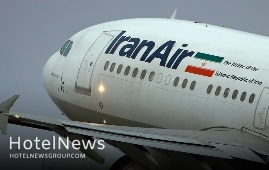
Iran has extended travel restrictions on flights to and from 15 countries due to a surge in the coronavirus disease, according to Iran Civil Aviation. The Islamic Republic has banned flights to India, Pakistan, France, Botswana, Brazil, Czech Republic, Iraq, Estonia, Ireland, Lesotho, Malawi, Mozambique, Slovakia, South Africa, and Zambia aimed to curb the disease, Meher quoted Hassan Khoshkhou, the director of Air Transport at the ICA, as saying on Wednesday. Moreover, the ban of selling air tickets to the cited countries has been declared to the travel agencies based on a decree issued by the National Headquarters for Coronavirus Control, the official explained. Iranian citizens without a negative coronavirus PCR test result are subject to medical screening and quarantine for 14 days at their own expense, while non-Iranian nationalities without the certificate are not allowed to enter the country. All passengers are subject to the medical screening on arrival, and if they are suspected of having the disease, non-Iranian nationalities will be quarantined at a place specified by the Health Ministry at their own expense and Iranian citizens will need to self-isolate for 14 days. The worldwide outbreak of COVID-19 has brought the world to a standstill, and tourism has been the worst affected of all major economic sectors. World tourist arrivals fell by 72% over the first ten months of 2020, according to data compiled by the World Tourism Organization (UNWTO) in December. Iran has also suffered the same fate as, according to available data, its foreign arrivals plunged 72% during the first eight months of 2020 when compared to 2019. New cases and mortalities In a press briefing on Wednesday, Iran's Health Ministry’s spokesperson confirmed 21,713 new cases of COVID-19 infection, raising the total number of infections to 2,459,906. She added that 1,923,081 patients have so far recovered, but 5,338 remain in critical conditions of the disease."During the past 24 hours, 434 patients have lost their lives, bringing the total number of deaths to 70,966," she added. So far, some 15,562,560 COVID-19 diagnostic tests have been performed in the country.
Create: May 1, 2021 Edit: May 1, 2021 Regional News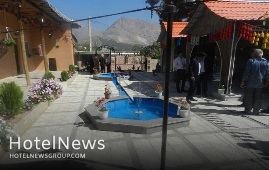
Extra support for digital businesses and various travel branches could rocket up the tourism industry in Kohgiluyeh and Boyer-Ahmad province, the provincial tourism chief has said. Digital businesses amid the outbreak of the coronavirus in the country, which causes a major hit to the economic sectors including tourism, could help to increase the income of people active in this field, IRNA quoted Majid Safai as saying on Saturday. Considering the weather of the area and the farms of fish, saffron, silkworm, and ostrich as well as rice paddies scattered across the province, it has the potential to become a hub for agritourism and other new branches of tourism, the official added. Agritourism is a relatively new branch of the travel industry in which tourists stay with local people in rural areas. Farm/ranch recreation refers to activities conducted on private agricultural lands, which might include fee-hunting and fishing, overnight stays, educational activities, etc. To achieve this goal, residential units, echo-lodges, and tourist complexes need to be improved, he explained. He also noted that ongoing tourism-related projects need to be completed, while new investment packages are being defined to attract more investors to the region. While most of the activities in this field are on halt due to the coronavirus pandemic over the globe, virtual festivals and online tours could help to promote the tourist attractions of the province, he said. Last year, the official announced that the tourism sector of Kohgiluyeh and Boyer-Ahmad province is prepared to improve quickly after the coronavirus crisis ends. He also noted that innovative plans and programs and various cultural festivals are being organized to attract tourists and travelers to the alluring destinations of the province. The lesser-known Kohgiluyeh and Boyer-Ahmad province is a cradle for nomadic life. Sightseers may live with a nomadic or rural family for a while or enjoy an independent stay and assist them with day-to-day life. It also opens up an opportunity to feel rustic routines, their agriculture, traditions, arts, and culture.
Create: Apr 25, 2021 Edit: Apr 25, 2021 Regional News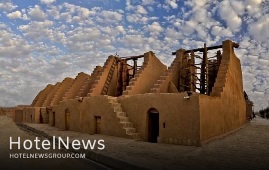
The process of preparing four caravanserais and Asbads (ancient vertical-axis windmills) in South Khorasan province is being carried out and the UNESCO assessors are projected to visit the sites by mid-May to register them in the World Heritage list. UNESCO assessors will travel to Iran for a final evaluation, and we hope to see the province's fifth property inscribed on the UNESCO World Heritage list this year, Hassan Ramezani, director-general of Cultural Heritage, Handicrafts and Tourism Department of South Khorasan said on Wednesday, ILNA reported. Located in eastern Iran, South Khorasan province is home to many historical and natural attractions such as Birjand Castle, Dragon Cave, Furg Citadel, and Polond Desert. It is also known for its famous rugs as well as its saffron and barberry which are produced in almost all parts of the province. Asbad used to be a smart technique to grind grains. It also bears testimony to the human being’s adaption with nature by transforming environmental obstacles into opportunities. Iran plans to register a wide collection of its Asbads in different provinces on the UNESCO World Heritage list. The architectural spaces of these caravanserais include entrance porches, cells, docks, stables, water reservoirs, and the royal sitting hall, and in some caravanserais, impressive and very beautiful brick decorations have been used, and this architectural style and characteristics have made these works valuable." We are trying to prioritize the excavations of Kaleh Koob site in the form of joint studies with foreign groups through the Cultural Heritage Research Institute so that we can use modern Iranian methods in exploring this site." He explained the province's progress plans in the field of cultural heritage and said: "We have some research work in the field of very rich and valuable areas of South Khorasan which we continue them to reach a clear result. One of them is the ancient site of "Kaleh Koob" around the city of Sarayan, where we have done three seasons of archeological excavations so far, and there are artifacts and remains that date back to the late Neolithic to the Bronze Age.” He continued: "We are trying to prioritize the excavations of Kaleh Koob site in the form of joint studies with foreign groups through the Cultural Heritage Research Institute so that we can use up-to-date Iranian methods in excavating this site." He also pointed out that so far three seasons of archeological excavations and speculation operations have been carried out in the area of "Takhcherabad", noting: "During the study of architectural works and evidence obtained, in the opinion of many of my colleagues and experts and archaeologists, the antiquity of this hill, which is located around Birjand, can be traced back to the Median period in terms of architecture and history. Therefore, we definitely need to continue the exploration operations in this area so that we can achieve more accurate and scientifically sound results." Ramezani pointed out: "In the field of restoration, fortunately, the Ministry of Cultural Heritage, Handicrafts and Tourism, and especially the Deputy Minister of Cultural Heritage, Dr. Talebian, had a good view and also a good knowledge and domination of the historical capacities of South Khorasan, which has made us now one of the leading provinces in the field of buildings that are being restored with the participation of owners and the private sector, and we are even restoring a large number of historical buildings with the participation of owners and the private sector." The official underlined: "Following this process, a number of historical monuments in the province will be restored this year from our partnership funds. In addition, in the field of urban and rural historical textures, due to the number of nationally registered valuable textures, this year we will also see the continuation of restoration works in the walls of the passages, flooring, and restoration of single buildings in the area of historical textures." Ramezani also announced: "By mid-May, the process of launching the Museum of Clothing and Textiles of South Khorasan, which has been completed by the private sector at the historical house "Pardeli" in Birjand, and will be put into operation during the cultural heritage week."
Create: Apr 24, 2021 Edit: Apr 24, 2021 Regional News
Hoteliers, let me ask you a question. What does it mean to run a secure hotel? The answer may vary, depending on who you ask. Why? Because security, across any industry, is a multifaceted discipline and an essential consideration for brands that interact with customer data and information. Cybersecurity attacks are commonplace in today’s world, and hotels are increasingly attractive targets due to their association with a variety of sensitive data. In fact, two of the top five biggest data breaches made public in 2020 were at hotel chains. Globally, cybercrime damages are expected to reach US $6 trillion by 2021. As our industry continues to embrace technological innovation across common touchpoints in the name of enhanced convenience and personalization, we realized the subsequent need for enhanced security protocols. With great power comes great responsibility, and the handling of personal data is no exception. The possibility for personalization is seemingly endless, but so are the associated security risks if hotels don’t take the necessary precautions to fortify their operations. Ironically though, hospitality’s ongoing focus on compliance often obscures the macro-level view of hotel security. All too often, we make the mistake of associating compliance with security when, in fact, they are not synonymous. Adherence to regulatory standards is important, but these standards often fail to account for the increasingly nuanced and ever-changing requirements of cybersecurity initiatives across hospitality. With ten years of former military experience under my belt, I’ve entered IT and cybersecurity with a unique perspective. My former career instilled in me the importance of a detail-centric approach, which I now apply to the world of hospitality regulations and procedures. I understand, intimately, that compliance is the first step – but it isn’t the entire picture. This realization holds even more weight in the pandemic era, a time when hotels are increasingly vulnerable to cybersecurity breaches and risks. A Demand for Security Innovation Historically, the hospitality industry has been slow to embrace technological change. Under the guise of tradition, many hospitality leaders have fallen victim to antiquated ideologies over the years — better known as the “we’ve always done it this way” mindset. Despite this, innovation is, ultimately, undeniable across a landscape that is primarily dictated by guest demands and preferences. However, the rate of change across our industry is often slow, and there is perhaps no better example of this stalemate than hotel tech security. While many aspects of our industry have seemingly ‘caught up’ to other sectors in regards to forward-facing innovation, IT and security have, for the most part, been left in the proverbial dark ages. We see hotels offering their guests an ultramodern experience, rife with next-gen upgrades and platforms including self-service kiosks, smart hotel rooms, AI-powered concierge robots, and keyless room entry. These are incredible advancements. When we pull back the curtain to view the policies and procedures at work behind the scenes, we realize a stark contrast. A robot concierge at a given hotel might know your name and seamlessly address your requests once you arrive on the property. However, that same hotel will probably still require you to manually fax or email a credit card authorization form. As an industry, we are making strides forward, but we have – for the most part – left core security considerations behind. To this effect, many of the hotel security breaches that dominated headlines involved hotels that were, in fact, compliant in terms of regulatory standards. These breaches often compromised point of sales systems that, despite complying with current industry standards, exposed guest credit card information in a way that put guests and hotel reputations at risk. Hotel Security for a Post-Pandemic World When considering the scope of hotel cybersecurity, it’s important to recognize that credit card theft is only one of many risks. Our industry relies on the exchange of large amounts of sensitive personal information, and the post-pandemic innovation and automation poised to spearhead hospitality’s recovery will, ultimately, thrive on guest data. As we look to a future of keyless room entry, AI-powered touchpoints, and high-tech self-service, we must consider the enhanced security required by increasingly interconnected hotel systems. Reports indicate that the more devices connecting to a network, the more vulnerable it is to cyberattacks. 513,936,296 hospitality data records were stolen or lost in 2018. In early 2020, 5.2 million guest records were compromised in one hotel chain breach 423 million travelers have been victims of a cyberattack through their business with hotels 70% of guests believe hotels don’t invest enough in cybersecurity protection Moreover, we must acknowledge the current state of the hospitality workforce. As our industry prepares for recovery after a period of severe downturn, we will welcome many newcomers to our industry in addition to restricted staffing due to limited post-pandemic budgets and cost-saving initiatives. New talent is welcome, but hotels should be increasingly cognizant of IT and cybersecurity training and awareness for all new and returning staff. After all, 95% of all data breaches can be traced to human causes. With this in mind, comprehensive cybersecurity training should be prioritized at every level of any organization. In fact, hotels should take this time to audit and, potentially, reinvent their cybersecurity best practices. Not only should risk assessments be performed every year, but they should also be performed every time a hotel implements a new solution. This may seem tedious initially, but dealing with the costs and reputational repercussions of a large-scale cybersecurity breach is far more taxing. Now, more than ever before, hoteliers must look beyond compliance to consider big picture hotel cybersecurity. Identifying any and all opportunities for risk is the only way to defend against it, and data security should be embedded into the very culture of a hotel. The more you educate your employees, the less likely they are to become the victim of a breach or attack.. In the post-pandemic world, creating a truly secure environment demands a diverse and increasingly detail-oriented approach to managing and protecting sensitive information.
Create: Apr 19, 2021 Edit: Apr 19, 2021 Hotel Management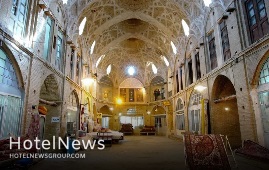
More than 180 billion rials (about $4.2 million at the official rate of 42,000 rials) in loans has been paid to tourism and handicraft businesses affected by the coronavirus pandemic in Zanjan province. Amir Arjmand, the director-general of Cultural Heritage, Tourism and Handicrafts Department of Zanjan said the financial facilities were paid within the framework of 547 projects to the businesses having 1,500 employed persons, IRNA reported on Saturday. He also noted that 623 units were introduced to receive the facilities in the province, of which 76 cases were related to the field of tourism and 547 cases were related to the field of handicrafts. "So far, the tourism units of the province that have succeeded in receiving corona facilities include travel and tourism services offices, eco-lodges, hotels and welfare, and intermediate service complexes." The official also said: "Identifying, training, paying facilities and supporting activists in the field of handicrafts and tourism facilities of the cities with the purpose of boosting production in this area and creating employment is our priority this year." Despite the difficult situations due to the coronavirus, the development of handicraft workshops, the development of tourism facilities, and the increase in the issuance of licenses for handicrafts and travel services and ecotourism offices were considered last year.
Create: Apr 18, 2021 Edit: Apr 18, 2021 Regional News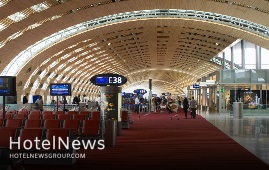
All flights to and from France have been suspended due to the outbreak of the coronavirus, the spokesman of Iran’s Civil Aviation Organization (CAO) has announced. Flights to and from 39 countries with special conditions are also canceled until further notice, Mohammad Hassan Zibakhsh said on Wednesday. However, Iran’s flag carrier IranAir is set to resume flights to and from the United Kingdom after months of suspension imposed to curb the spread of a novel coronavirus variant into the Islamic Republic, the official added. Back in February, Iran suspended flights to and from 32 countries including Angola, Bolivia, Botswana, Burundi, Cape Verde, Chile, Colombia, the Democratic Republic of the Congo, Ecuador, Eswatini, French Guinea, Lesotho, Guyana, Malawi, Mauritania, Mauritania, Rwanda, Sicily, Suriname, Tanzania, Uruguay, Venezuela, and Zambia. Earlier, Iran announced it would reduce the validity of negative COVID-19 PCR test results from 96 hours to 72 hours for inbound and outbound passengers. The new regulation replaced a role that required to bar passengers from boarding if they do not have a negative COVID test within 96 hours of departure. All passengers are subject to the medical screening on arrival, and if they are suspected of having the disease, non-Iranian nationalities will be quarantined at a place specified by the Health Ministry at their own expense and Iranian citizens will need to self-isolate for 14 days. The worldwide outbreak of COVID-19 has brought the world to a standstill, and tourism has been the worst affected of all major economic sectors. World tourist arrivals fell by 72% over the first ten months of 2020, according to data compiled by the World Tourism Organization (UNWTO) in December. Restrictions on travel, low consumer confidence, and a global struggle to contain the coronavirus pandemic are amongst factors contributing to the worst year on record in the history of tourism. Iran has also suffered the same fate as its foreign arrivals plunged 72% during the first eight months of 2020 when compared to 2019.
Create: Apr 15, 2021 Edit: Apr 15, 2021 Regional News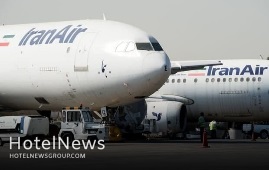
Iran’s flag carrier IranAir is set to resume flights to and from the United Kingdom as of May 6 after months of suspension imposed to curb the spread of a novel coronavirus variant into the Islamic Republic. “IranAir will resume flights between Tehran and London on May 6,” IRNA quoted Hossein Jahani, who presides over the airline’s public relations department, as saying on Sunday. Jahani said the flights to London will be operated on Sundays and Thursdays every week due to the lifting of the COVID-19 restrictions in the UK. In December, the Islamic Republic halted flights to and from the United Kingdom, preliminary for two weeks, and then the ban was initially extended for one month at the discretion of the Health Ministry to prevent the transmission of the ‘British’ variant and to try to maintain public health. At that time, an ensuing wave of travel bans cut off UK travelers from much of Europe and other parts of the world. Some experts believed that there was no evidence the new variant was more deadly or would react differently to vaccines, but it was proving to be up to 70% more transmissible.
Create: Apr 15, 2021 Edit: Apr 15, 2021 Regional News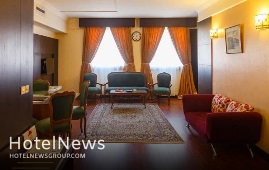
Iranian hotels and other accommodation units remain open as the fourth coronavirus wave gains momentum across the country. To curb the outbreak, President Hassan Rouhani on April 8 announced plans to close down all non-essential businesses, including bazaars and malls in cities color-coded 'red' or very high-risk for a ten-day period as of Saturday. “Hotels and other accommodation unite will be remaining open during the fourth coronavirus wave,” according to the Iranian Hoteliers Association, ISNA reported. The total number of coronavirus cases surged past the two million on Thursday as the new wave of infections has overwhelmed hospitals in all major cities. “We are expecting even more hospitalizations caused by the viral disease over the next few days,” Health Minister Saeed Namaki said on Friday. ICU beds are filled in many cities and the government is to set up makeshift hospitals to make room for more patients and advising patients to visit hospitals only if it is necessary. The number of coronavirus cases rose after millions traveled across the country during the Noruz holiday, which officially began on March 20. The Islamic Republic reported its highest number of daily coronavirus infections in more than three months period after millions challenged government guidelines and traveled during the two-week holiday. Before Noruz, health officials voiced concerns about the fourth COVID wave due to the traditional travels, mostly to visit family and loved ones. Authorities had urged people to limit travel and in-person visits, saying that travels during the Noruz festival could lead to another wave of infections across the country. President Hassan Rouhani declared new travel bans for cities situated in the “red” and “orange” zones to combat the new COVID-19 variant. Rouhani called on people to avoid traveling during the Iranian New Year holidays to help contain the spread of coronavirus. He said it would be forbidden to make trips to cities marked as “red” and “orange” in terms of the prevalence of COVID-19. “We request people to avoid traveling during Noruz holidays for the sake of their own health… It will be forbidden to travel to red and orange towns and cities,” he said. “No one should make any plans to travel to these cities,” he stressed. The Ministry of Health has classified districts based on the rate of coronavirus infections with red color indicating high risk, orange meaning medium, while yellow implied low risk and blue being the least.
Create: Apr 11, 2021 Edit: Apr 11, 2021 Regional News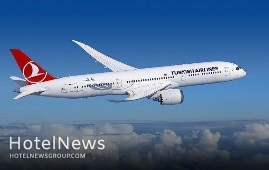
All outbound tours to Turkey have been canceled due to the spread of a new coronavirus variant, the secretary of the Association of Iranian Airlines has announced. According to the Interior Ministry, and the National Headquarters for Coronavirus Control, tourist tours to Turkey have been canceled until further notice, IRNA quoted Maqsoud Asadi Samani as saying on Tuesday. However, flights between Iran and Turkey are operated on schedule, the official added. Earlier this week the official announced that there is no plan at present to suspend flights to and from Turkey. He added that airlines flying to Turkey will immediately halt the service if the National Headquarters for Coronavirus Control votes to its suspension. Considering the widespread of the mutated coronavirus in Turkey, it is necessary to halt, by the next 48 hours, traveling via land and air borders to and from Turkey for a week, Namaki stressed. “Iranian citizens who are in Turkey and intend to turn back to the country, as well as Turkish citizens who are in Iran, can leave the country observing the relevant protocols and doing PCR test to make sure no infection spreads,” he highlighted in the letter. For Iranians entering the country from land and air borders, quarantine is also required for suspicious or positive cases, he stated. On February 22, the spokesman of Iran's Customs Administration Rouhollah Latifi said Iran has closed five crossing points with Iraq to prevent the spread of the UK variant of coronavirus, ISNA reported. Flights between the two neighbors have repeatedly been suspended in recent months for the sake of coronavirus concerns though passengers are required to observe strict health protocols and hold a well-being certificate with a negative coronavirus PCR test result.
Create: Apr 10, 2021 Edit: Apr 10, 2021 Regional News
